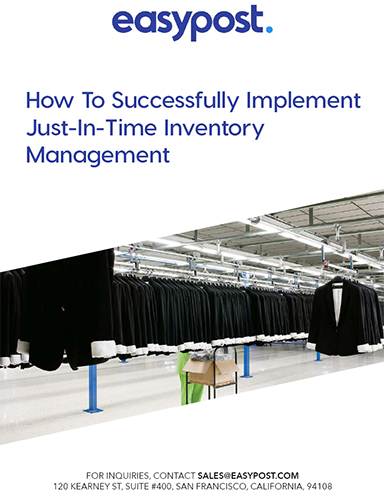How to Successfully Implement a Just-in-Time Inventory Management System
The takeaway in this paper is that just-in-time can be a boon for your operations if you implement it, but mitigating risk by having backup manufacturers or carriers would be a prudent move since you never know what will happen.
Introduction
Good logistics is all about eliminating waste and promoting efficiency.
The point isn't to save money at the expense of operational quality, but rather to find exactly how much is required to smoothly run your business.
You don't want your operations to suffer, but you also don't want your operations to carve chunks from your revenue.
This is why strategies like JIT are popular because they cut out unnecessary costs while keeping your business running smoothly.
For the uninitiated: JIT means receiving goods only as they are needed in the production process. It's a strategy that depends on accurate demand forecasting in order to simultaneously meet demand while minimizing carrying costs. A good example is an apparel brand like Zara employing their “fast fashion” strategy by manufacturing in small runs, keeping small stocks to ensure that they can get the latest looks and styles to their customers before most of their competitors can.
If good logistics is all about increasing efficiency and decreasing waste, JIT achieves that by aiming to eliminate inventory costs without losing potential revenue from stockouts.
The first adopter of JIT was Toyota (which is why JIT is also known as the Toyota Production System or TPS), and its credited as the secret sauce to Toyota’s current dominance in the automotive industry.
Companies that implement JIT see a huge reduction in labor costs, space and storage costs, inventory flow times, and an increase in inventory turnover.
Of course, implementing JIT comes with substantial risks. If one part of your supply chain goes down, it could potentially disrupt your entire production line. By refusing to carry safety stock as a contingency, you’re placing a lot of faith on the reliability of your manufacturers, shippers, and fulfillers. This doesn’t necessarily make JIT any better or worse than other inventory management strategies, but it does mean that you have to be careful in how you implement JIT.
In order to implement JIT to maximize its benefits while minimizing its risk, you’ll need to do three things: have contingencies along your entire supply chain, ensure your fulfillment is reliable and fast, and maintain solid demand forecasting.
Download the Paper: How to Successfully Implement a Just-in-Time Inventory Management System
What’s Related




Favorites





